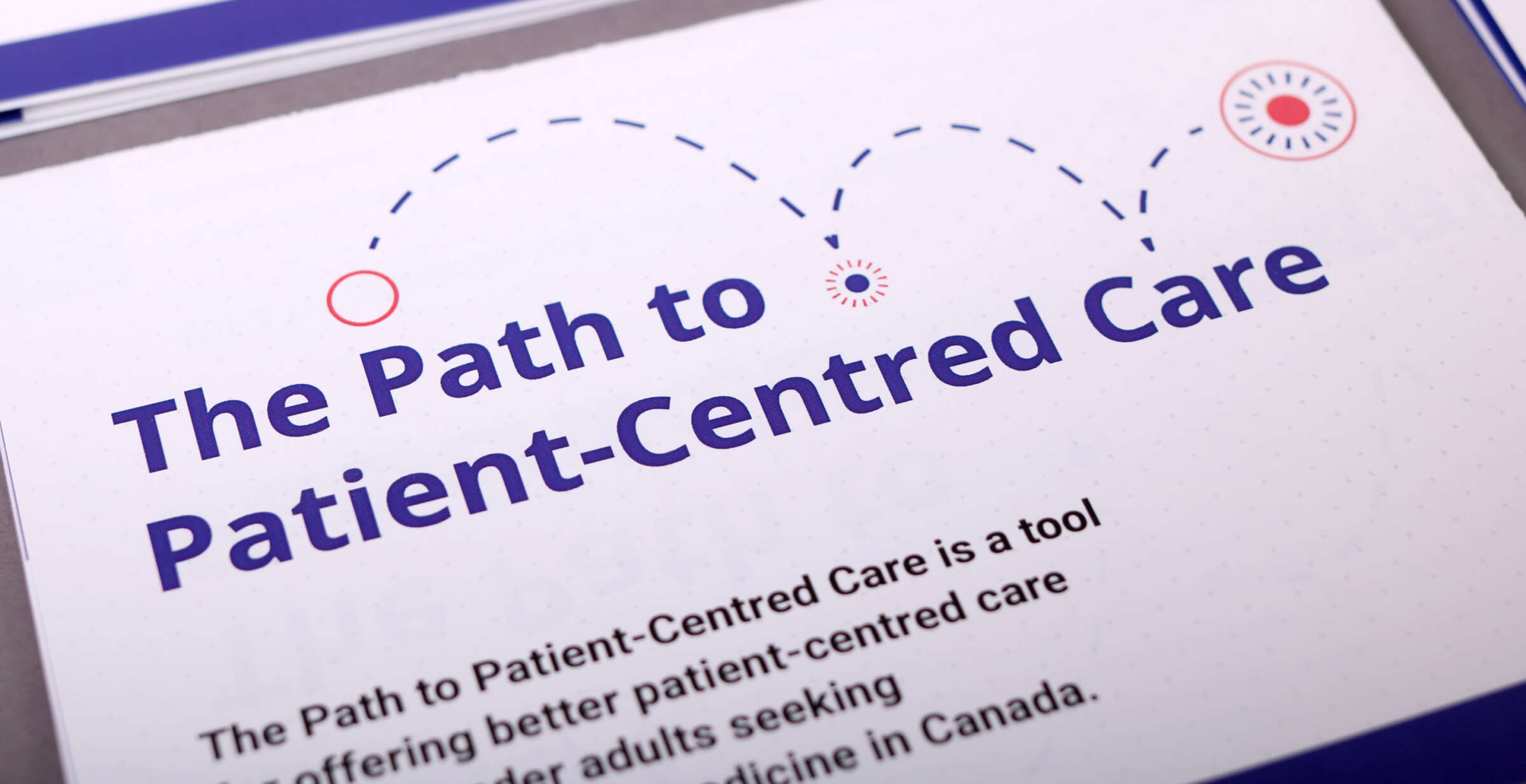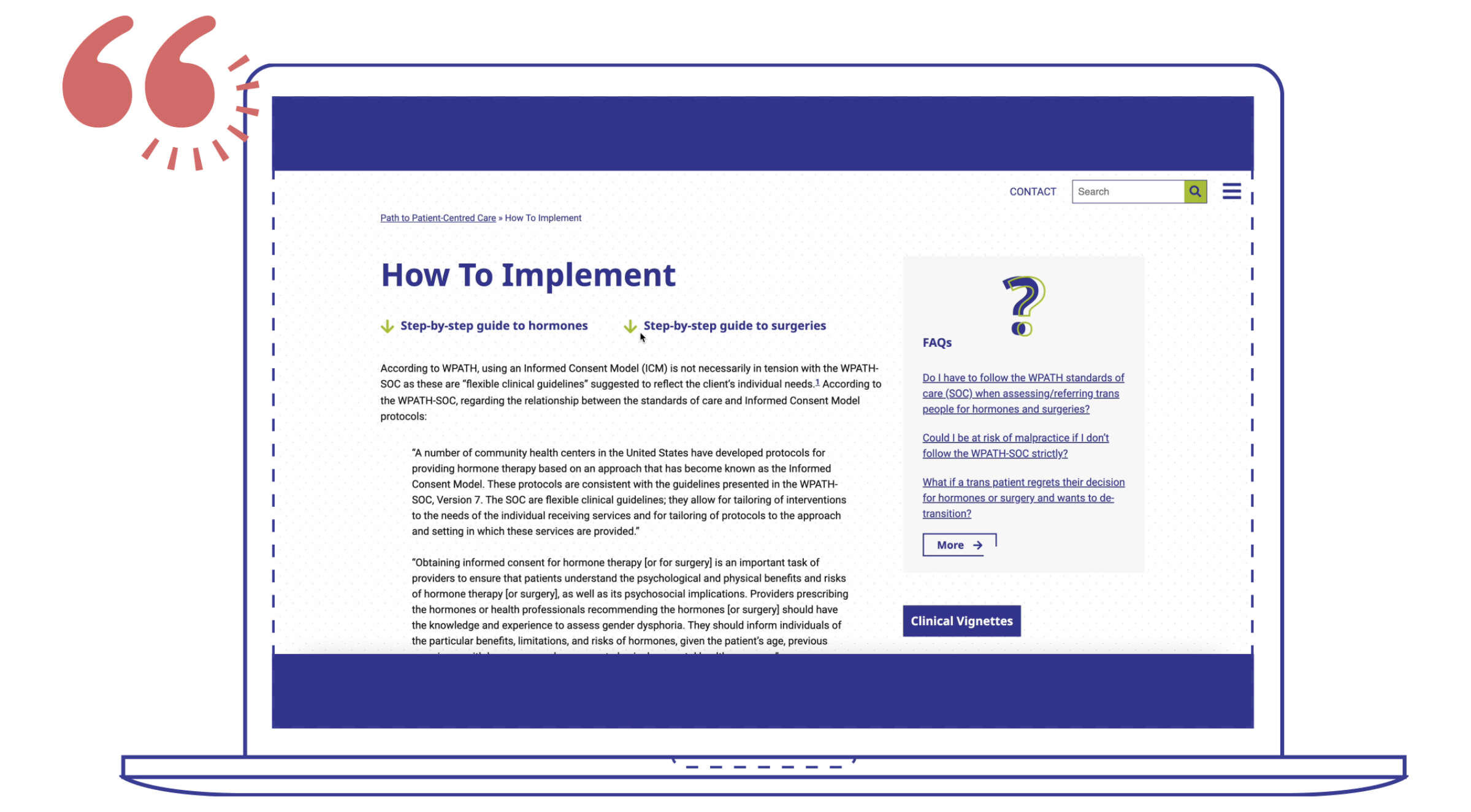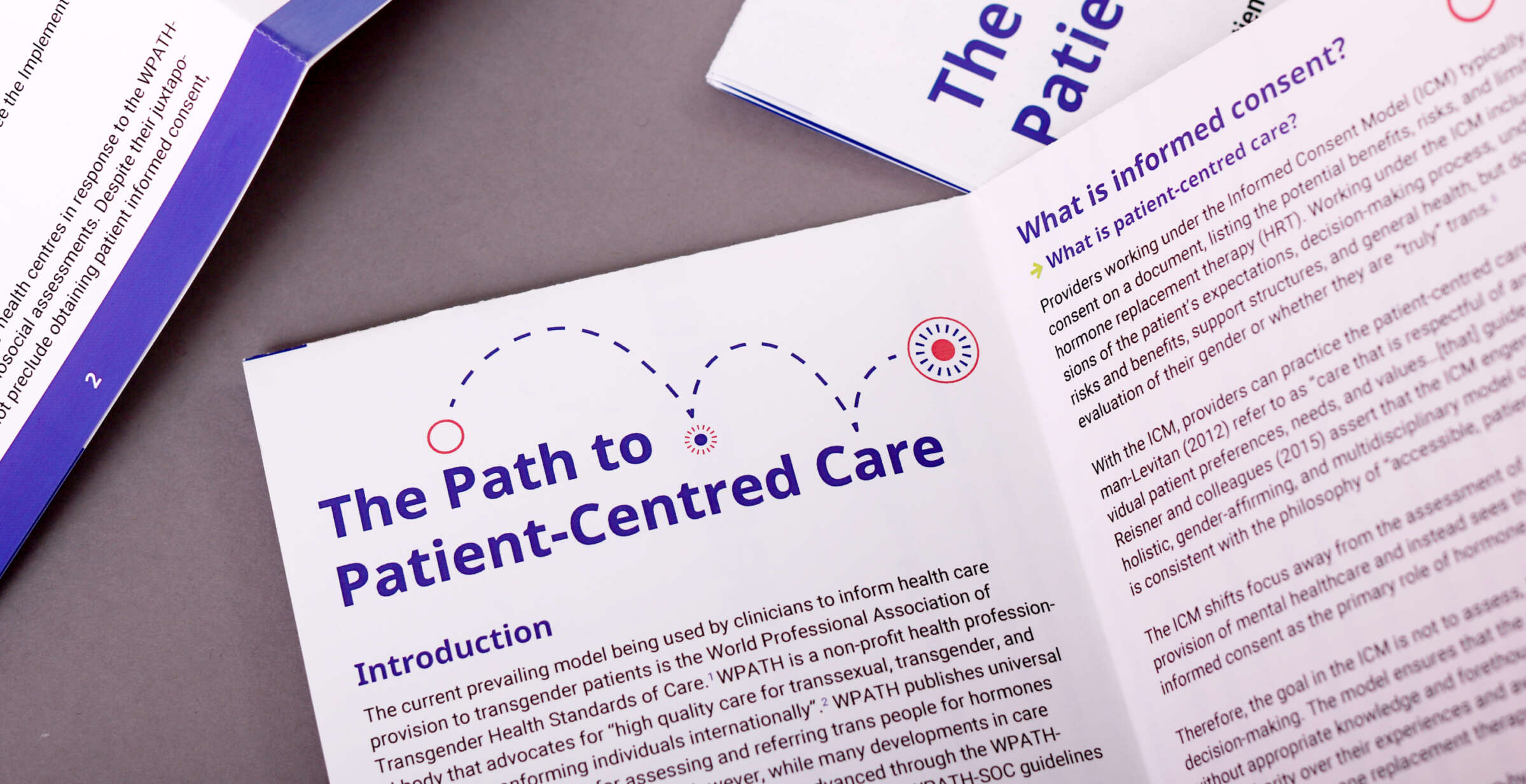The Path to Patient-Centred Care
Client
Year

The WPATH (World Professional Association for Transgender Health) standards of care articulate professional guidelines about the psychiatric, psychological, medical, and surgical management for transgender patients seeking support with surgery and/or hormone treatment. While the WPATH is considered the gold standard of care, and is required to be followed for provincially-funded gender-affirming surgeries, this model offers little in terms of patient-centred care.
In contrast, the informed consent model is more accessible, holistic, gender-affirming and patient-centred. Clinicians have taken steps toward applying the informed consent model, but are faced with challenges when trying to work in a patient-centred way: a lack of clarity around how to apply an informed consent model within the WPATH standard of care; the requirement of WPATH for provincial funding for surgeries, the requirement of two evaluators, etc. While the WPATH standards of care articulate guidelines, there is room for interpretation and flexibility in how those guidelines are understood and applied.
The Need
We were invited to develop a strategy and design public-facing materials to:
- provide clarity around ways of applying an informed consent model to both surgeries and hormones;
- build knowledge and capacity around the evidence-based need and importance of applying an informed consent model;
- build an advocacy base to replace WPATH with informed consent as the gold-standard of care;
- support clinicians in applying the informed consent model by providing clear tools and workarounds; and
- draw on research to address concerns around applying the informed consent model (eg. feat of patient regret, lawsuits, etc.).

The Work
After conceptualizing some key deliverables (a hand-held guide, fold-out poster, online toolkit and mailing list template), we developed a creative framing and strategy that positioned Dr. MacKinnon’s research through the lens of patient-centred care:
The Idea
The path to patient-centred care
The path to patient-centred care is a framing that acknowledges the WPATH as the current standard of care, while providing alternative interpretations. These interpretations detail direct connections between criteria and alternative steps, offering the informed consent model as a mechanism to achieve patient-centred care.
Through this framing, we created a website, print materials and an e-newsletter template. The design operates as a “road map,” taking the clinician through the steps of WPATH and offering alternative routes to effectively practice and advocate for patient-centred care, while introducing the informed consent model as an alternative.

Visit the site at patient-centred.ca, and follow Dr. Kinnon MacKinnon’s work on TikTok at @prof.kinnonv.

How do you want to change the world and how can we help?
Let’s Connect